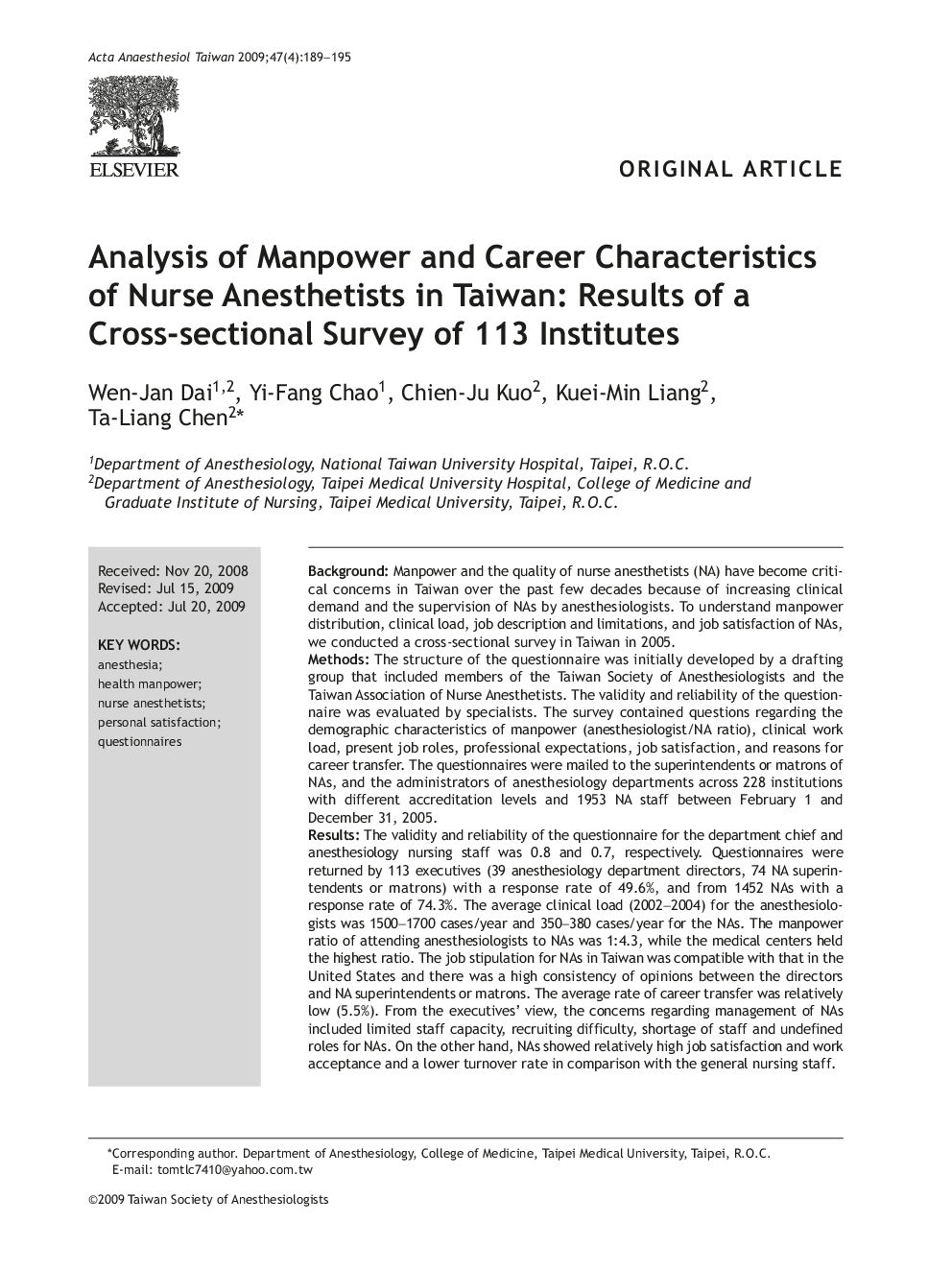| Article ID | Journal | Published Year | Pages | File Type |
|---|---|---|---|---|
| 2741653 | Acta Anaesthesiologica Taiwanica | 2009 | 7 Pages |
BackgroundManpower and the quality of nurse anesthetists (NA) have become critical concerns in Taiwan over the past few decades because of increasing clinical demand and the supervision of NAs by anesthesiologists. To understand manpower distribution, clinical load, job description and limitations, and job satisfaction of NAs, we conducted a cross-sectional survey in Taiwan in 2005.MethodsThe structure of the questionnaire was initially developed by a drafting group that included members of the Taiwan Society of Anesthesiologists and the Taiwan Association of Nurse Anesthetists. The validity and reliability of the questionnaire was evaluated by specialists. The survey contained questions regarding the demographic characteristics of manpower (anesthesiologist/NA ratio), clinical work load, present job roles, professional expectations, job satisfaction, and reasons for career transfer. The questionnaires were mailed to the superintendents or matrons of NAs, and the administrators of anesthesiology departments across 228 institutions with different accreditation levels and 1953 NA staff between February 1 and December 31, 2005.ResultsThe validity and reliability of the questionnaire for the department chief and anesthesiology nursing staff was 0.8 and 0.7, respectively. Questionnaires were returned by 113 executives (39 anesthesiology department directors, 74 NA superintendents or matrons) with a response rate of 49.6%, and from 1452 NAs with a response rate of 74.3%. The average clinical load (2002 – 2004) for the anesthesiologists was 1500 – 1700 cases/year and 350 – 380 cases/year for the NAs. The manpower ratio of attending anesthesiologists to NAs was 1:4.3, while the medical centers held the highest ratio. The job stipulation for NAs in Taiwan was compatible with that in the United States and there was a high consistency of opinions between the directors and NA superintendents or matrons. The average rate of career transfer was relatively low (5.5%). From the executives' view, the concerns regarding management of NAs included limited staff capacity, recruiting difficulty, shortage of staff and undefined roles for NAs. On the other hand, NAs showed relatively high job satisfaction and work acceptance and a lower turnover rate in comparison with the general nursing staff.ConclusionThis study represents the first large-scale assessment of the distribution, clinical load, and job satisfaction for NAs in Taiwan. The roles of NAs, which include preoperative preliminary preparation and postoperative intensive care, need to be more well-defined. To improve the quality of NAs and anesthetic care in Taiwan, it is vital to establish an official accreditation system and formal education programs, to institute well-defined and standardized job descriptions, and to improve resource allocation for NAs.
